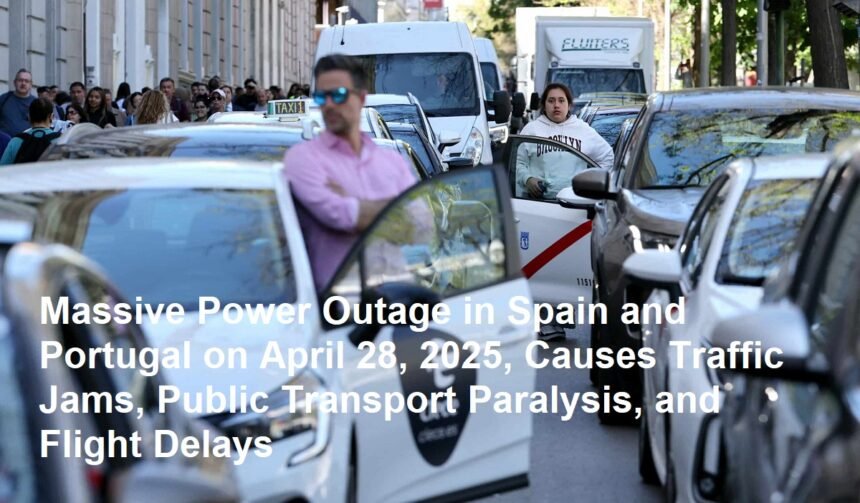On April 28, 2025, a widespread power outage struck large parts of Spain and Portugal, plunging millions of residents into darkness and causing significant disruptions across multiple sectors. The blackout, which lasted several hours in many areas, led to severe traffic congestion, paralysis of public transportation systems, and numerous flight delays and cancellations at major airports.
The Outage and Its Causes
The power failure began in the early evening and quickly spread across several regions in both countries. Initial investigations by the Iberian electricity grid operator indicated that the blackout was triggered by a fault in a major high-voltage transmission line, compounded by a sudden surge in electricity demand during peak hours.
Authorities reported that the failure cascaded through the grid, affecting urban centers including Madrid, Lisbon, Barcelona, and Porto. Emergency protocols were activated to restore power and manage the crisis.
Impact on Traffic and Transportation
One of the most immediate and visible effects of the blackout was the collapse of traffic management systems. Traffic lights across affected cities went dark, leading to widespread traffic jams and accidents at busy intersections. Commuters faced hours-long delays, with many roads gridlocked as drivers struggled to navigate without functioning signals.
Public transportation systems, including metro, tram, and bus networks, were severely disrupted. In Madrid and Lisbon, metro services were suspended for several hours due to safety concerns and power loss. Bus services were also halted or delayed, leaving thousands of passengers stranded.
Airport Disruptions and Flight Delays
Major airports in Spain and Portugal, including Madrid-Barajas, Barcelona-El Prat, and Lisbon Humberto Delgado, experienced significant operational challenges. The power outage affected air traffic control systems, runway lighting, and airport facilities, leading to flight delays and cancellations.
Airlines reported hundreds of disrupted flights, affecting both domestic and international routes. Passengers faced long waits, crowded terminals, and difficulties in rebooking. Airport authorities worked to restore backup power systems and resume normal operations as quickly as possible.
Emergency Response and Restoration Efforts
Electricity providers and emergency services mobilized rapidly to address the crisis. Repair crews were dispatched to identify and fix faults in the transmission network. Authorities urged residents to conserve energy and remain calm while restoration efforts were underway.
By late night, power was gradually restored to most affected areas, though some rural and suburban regions experienced longer outages. Government officials promised a thorough investigation into the causes and measures to prevent future incidents.
Economic and Social Consequences
The blackout had significant economic repercussions, disrupting businesses, retail operations, and essential services. Many shops and restaurants were forced to close temporarily, and manufacturing plants halted production.
Hospitals and critical infrastructure operated on backup generators, but the situation highlighted vulnerabilities in emergency preparedness. The outage also sparked public frustration and raised questions about the resilience of the Iberian power grid.
Government and Expert Reactions
Spanish and Portuguese energy ministers held joint press conferences to address the public and outline steps to enhance grid stability. Experts emphasized the need for investment in infrastructure modernization, diversification of energy sources, and improved grid management technologies.
The incident also reignited debates about the transition to renewable energy and the challenges of integrating variable power sources into the grid.
In summary, the massive power outage on April 28, 2025, in Spain and Portugal caused widespread disruption to traffic, public transportation, and air travel, affecting millions of people. While power was restored within hours, the event exposed critical vulnerabilities in the region’s energy infrastructure and underscored the importance of modernization and resilience planning.









